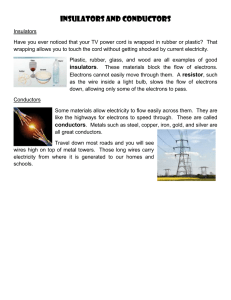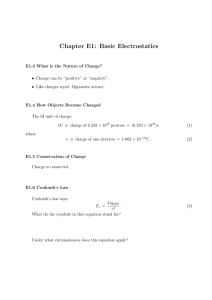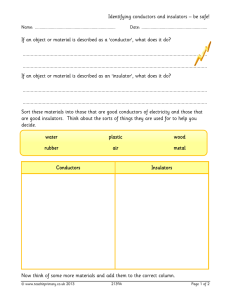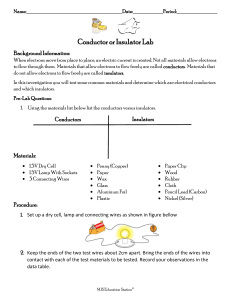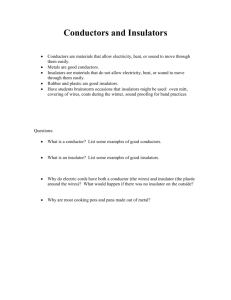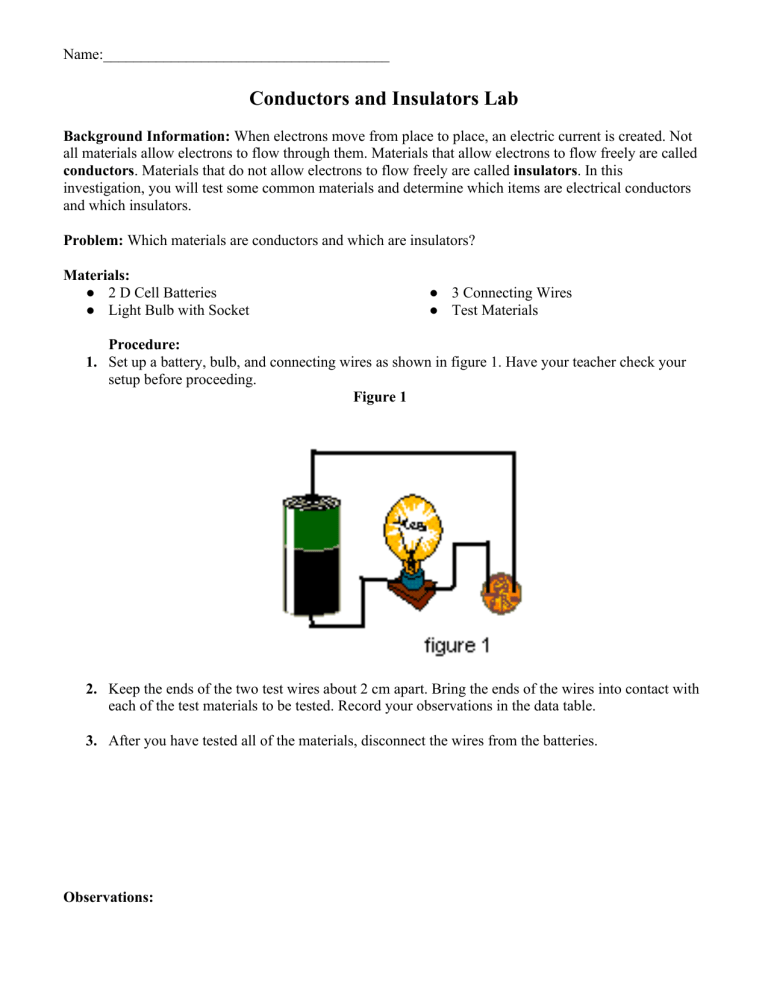
Name:______________________________________ Conductors and Insulators Lab Background Information: When electrons move from place to place, an electric current is created. Not all materials allow electrons to flow through them. Materials that allow electrons to flow freely are called conductors. Materials that do not allow electrons to flow freely are called insulators. In this investigation, you will test some common materials and determine which items are electrical conductors and which insulators. Problem: Which materials are conductors and which are insulators? Materials: ● 2 D Cell Batteries ● Light Bulb with Socket ● 3 Connecting Wires ● Test Materials Procedure: 1. Set up a battery, bulb, and connecting wires as shown in figure 1. Have your teacher check your setup before proceeding. Figure 1 2. Keep the ends of the two test wires about 2 cm apart. Bring the ends of the wires into contact with each of the test materials to be tested. Record your observations in the data table. 3. After you have tested all of the materials, disconnect the wires from the batteries. Observations: Material Bright Dim Copper Silver (Jewelry) Paper Wax Glass Aluminum Foil Plastic Paper Clip Wood Rubber Cloth Carbon (Pencil Lead) Analyze Data: 1. Which of the materials you tested are good conductors of electricity? 2. Which of the materials you tested are insulators of electricity? Conclusion Questions No Light 1. Are metals electrical conductors or insulators? Explain using information from your data table. 2. Are non-metals electrical conductors or insulators? Explain using information from your data table. 3. Why is most electrical wiring, such as the connecting wires used in the investigation, made of copper? 4. Provide some other examples of objects that are electrical conductors and some that are electrical insulators. These examples should not include any of the materials you tested during the lab. 5. Why were the wires in your circuit wrapped with rubber?

